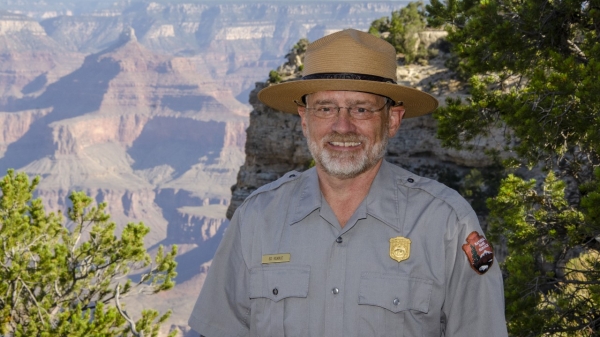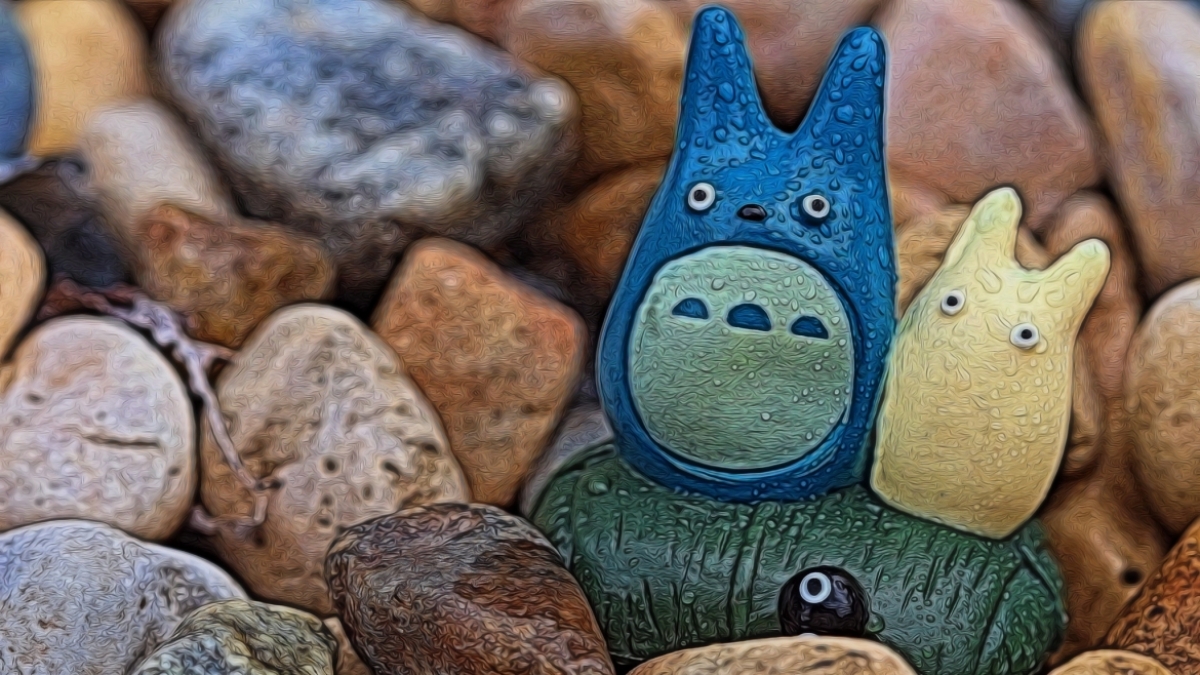It’s a big month for Studio Ghibli fans, with the studio’s U.S. release of its film “The Boy and the Heron” on IMAX screens and in regular theaters on Dec. 4 and Dec. 8, respectively.
“This is an important event for animeJapanese animation fans — myself included,” explained Arizona State University Associate Professor Wendy Williams, who studies English education and visual, multimodal storytelling in the College of Integrative Sciences and Arts' School of Applied Sciences and Arts at ASU's Polytechnic campus. “This is widely believed to be director Hayao Miyazaki’s final film. Miyazaki is 82 years old, and he came out of retirement to work on this project. It has been 10 years since he last released a feature-length animation.”
For fans wanting to keep the buzz going, or for those who’d like to find out what all the fuss is about, Williams’ popular course ENG 466: Studio Ghibli Films was recently added to the spring 2024 schedule. The seven-week iCourse, which runs March 11–April 26 (spring B session), will explore the films of Studio Ghibli, including works by master filmmakers Miyazaki and Isao Takahata.
Miyazaki founded Studio Ghibli in 1985 — together with director Takahata (who died in 2018) and producer Toshio Suzuki — after the critical and financial success of their film “Nausicaä of the Valley of the Wind.”
Meticulous craftsmanship, plucky protagonists (often heroines) and magical storytelling that explores the interplay of humans, nature and technology are some of the hallmarks of the studio’s films.
Students in the Studio Ghibli course watch the films of both directors, Takahata and Miyazaki.
“This is important,” Williams said, “because even though students tend to favor Miyazaki’s design aesthetic and talent for narrative, to really understand Miyazaki, they must also examine Takahata’s films.
“When you sit down and watch the entire Ghibli catalog, you start to see how the films are in conversation with each other,” she continued. “For example, if you love Miyazaki’s Academy Award-winning ‘Spirited Away,’ you really need to see Takahata’s influential work ‘Pom Poko.’ And one of the most impressive films ever released by the studio is Takahata’s ‘The Tale of the Princess Kaguya’; this film takes risks and pushes the boundaries of what is possible with animated narrative.”
Students in the course will watch the Ghibli catalog (available with an HBO Max subscription), read about and analyze the works, take quizzes, compose a creative project that connects to their interests and vote on their favorite films.
Williams first taught Miyazaki’s film “My Neighbor Totoro” as part of an undergraduate visual narratives course in 2017. Discovering the passion students had for Studio Ghibli, she developed an entire course devoted to the studio’s work for spring 2019 and then documented and analyzed that teaching experience in an articleRead Williams’ full article about teaching the course Studio Ghibli Films in the Journal of Adolescent and Adult Literacy, vo. 63, No. 6, May/June 2020. in a professional journal.
In that article, “Examining Studio Ghibli’s Animated Films: A Study of Students’ Viewing Paths and Creative Projects,” published in the Journal of Adolescent and Adult Literacy, she shows how using animation with students can help foster visual and multimodal literacies.
In her research, Williams found that students employed a variety of strategies when making sense of the works of Studio Ghibli. They examined sounds and music, visuals, cultural and historical elements, narrative features, source materials and intertextual relationships, and they brought their own life experiences into the analysis, she said.
As students responded to Studio Ghibli animation through creative projects of their own, they also tapped into their unique talents and interests, noted Williams. One student, for example, wrote a composition for harp inspired by the train and tunnel scenes in “Spirited Away”; another — who said the food in the films made him hungry — made a cookbook; another created a video game shaped by conflicts and tensions in one of the films.
Williams argues that animation needs to be taken more seriously in English education and sees enormous untapped potential for exploring many topics: “Some of the most moving, memorable and innovative narratives are in animated form. These stories deserve our attention.”
While on the subject of “attention,” Studio Ghibli’s most recent filmThe film was released in Japan as “How Do You Live?” The title comes from the book of the same name, by Genzaburō Yoshino. was released in Japan in July 2023, very quietly — with no trailers.
“That was intentional,” said Williams, sharing quotes from an interview that the film’s producer, Toshio Suzuki, gave with NHK explaining that decision: “Suzuki said, ‘When we were children … we enjoyed the anticipation before we saw a new film. We would see the poster and one or two lines of description and fill in the blanks with our imagination.’ He explained that the goal was for ‘the audience to go to the movie theater and feel pleasantly surprised.’”
With that goal in mind, Williams shielded herself from trailers and reviews so she could have that experience as well.
“That was more difficult than you might imagine!” emphasized Williams, who saw the film recently.
“‘The Boy and the Heron’ did not disappoint," she said. "I won’t say too much about it, but there is a scene near the end that I very much view as a metaphor for Miyazaki retiring. If this really is his final film, I can’t think of a more fitting exit.”
Top photo: A depiction of Totoro, a beloved Studio Ghibli character from the film "My Neighbor Totoro." Image courtesy Kyla Duhamel/Flickr
More Arts, humanities and education

Grand Canyon National Park superintendent visits ASU, shares about efforts to welcome Indigenous voices back into the park
There are 11 tribes who have historic connections to the land and resources in the Grand Canyon National Park. Sadly, when the park was created, many were forced from those lands, sometimes at…
ASU film professor part of 'Cyberpunk' exhibit at Academy Museum in LA
Arizona State University filmmaker Alex Rivera sees cyberpunk as a perfect vehicle to represent the Latino experience.Cyberpunk is a subgenre of science fiction that explores the intersection of…

Honoring innovative practices, impact in the field of American Indian studies
American Indian Studies at Arizona State University will host a panel event to celebrate the release of “From the Skin,” a collection over three years in the making centering stories, theories and…
